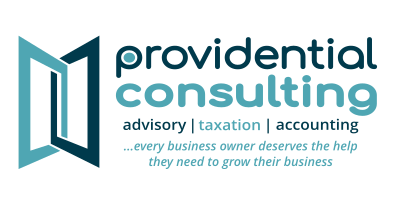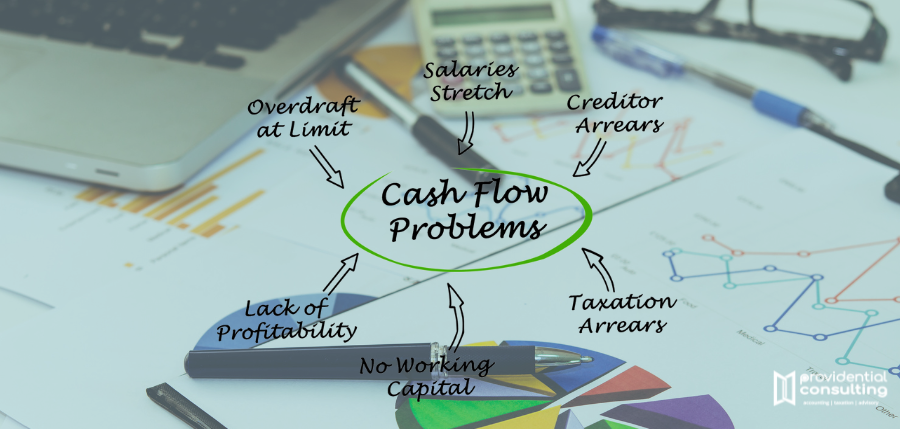Understanding Cash Flow Forecasting
Cash flow forecasting is akin to weather forecasting for your business finances. It’s a financial management tool that involves estimating the future inflows and outflows of cash in your business over a specified period. In simpler terms, it’s a way to predict how much money will flow in and out of your business in the coming weeks, months, or even years.
At its core, cash flow forecasting provides you with a forward-looking view of your business’s financial health. It allows you to anticipate the peaks and troughs in your cash balance, providing insights into when you can expect to have surplus cash and when you might face shortages.
But why is this so crucial, especially for growing businesses? Let’s break it down:
- Financial Control: Cash flow forecasting serves as the foundation of financial control in your business. By estimating cash movements, you gain better control over your finances, ensuring that you have the necessary funds to cover expenses and invest in growth opportunities.
- Proactive Decision-Making: Rather than merely reacting to financial challenges, cash flow forecasting empowers you to be proactive. It equips you with the information needed to make informed decisions, whether it’s taking advantage of expansion opportunities or adjusting spending during lean periods.
- Risk Management: In business, unexpected financial challenges can arise at any time. Cash flow forecasting acts as a financial safety net, helping you identify potential risks and devise strategies to mitigate them. It’s your early warning system against financial crises.
- Investor and Lender Confidence: If your business seeks external funding or partnerships, cash flow forecasts are a must. Lenders and investors want assurance that you have a clear financial plan. A well-structured cash flow forecast boosts their confidence in your business’s ability to repay loans or generate returns on their investment.
- Working Capital Optimization: For businesses with tight cash flows, optimizing working capital is critical. Cash flow forecasting provides insights into how you can efficiently manage your accounts receivable, accounts payable, and inventory to ensure you have enough cash on hand.
In essence, cash flow forecasting is about peering into your financial future, allowing you to navigate your business’s journey with foresight and confidence. In the following sections, we’ll delve deeper into why cash flow forecasting is invaluable for growing businesses and how to go about creating your own cash flow forecast. So, stay tuned as we uncover the strategies and benefits that come with mastering this financial practice.
Difference between cash flow and profit
To truly appreciate the importance of cash flow forecasting, it’s crucial to understand the fundamental distinction between cash flow and profit. While both are essential financial metrics, they serve distinct purposes and can tell vastly different stories about your business’s financial health.
Cash Flow: The Lifeblood of Your Business
Cash flow represents the actual movement of money in and out of your business. It encompasses all the cash transactions that occur within a specific period, typically a month, quarter, or year. Cash flow can be further divided into two main categories:
- Inflows: These are the sources of cash entering your business, such as customer payments, loans, or investments. Inflows are often associated with revenue generated from sales or external financing.
- Outflows: Outflows are the expenditures or payments made by your business during the same period. This includes expenses like rent, payroll, utility bills, and loan repayments.
Now, here’s the critical distinction: Cash flow considers the timing of these transactions. It accounts for when cash is received and when it’s spent. This temporal aspect makes cash flow an excellent indicator of your business’s liquidity and its ability to cover short-term obligations.
Profit: A Measure of Performance
Profit, on the other hand, is a measure of your business’s financial performance over a specific period, often a year or a fiscal quarter. It is determined by subtracting your total expenses from your total revenue. Profit can be categorized into several types:
- Gross Profit: This is the difference between your revenue and the direct costs associated with producing or delivering your products or services.
- Operating Profit: Operating profit takes into account your operating expenses, such as rent, utilities, and payroll, in addition to direct costs.
- Net Profit: Also known as the bottom line, net profit considers all expenses, including taxes and interest, to provide a comprehensive view of your profitability.
Now, here’s the key difference: Profit is an accounting measure and is recorded when a sale is made or an expense is incurred, regardless of when cash actually changes hands. It does not reflect the timing of cash movements.
This disparity between cash flow and profit is why businesses can appear profitable on paper yet struggle with cash shortages. Conversely, a business may have positive cash flow despite reporting low or negative profits.
So, why does this matter for growing businesses? Understanding this distinction is vital because it highlights the need for cash flow forecasting. It helps you navigate situations where your profit and cash flow might not align, ensuring you have the liquidity needed to sustain and expand your operations.
In the next section, we’ll delve into the scenarios where profit and cash flow diverge and why this awareness is pivotal for your growth strategy.
Role of cash flow in business operations
Now that we have a clear understanding of what cash flow is and how it differs from profit, let’s delve into why cash flow is so crucial to the day-to-day operations of your growing business.
- Sustaining Daily Operations:
Cash flow is the lifeblood of your business, providing the essential resources needed to sustain daily operations. It ensures you have the funds to pay your employees, cover rent and utility bills, purchase inventory, and meet other immediate financial obligations. Without positive cash flow, even a profitable business can struggle to stay afloat.
- Managing Short-Term Needs:
In the business world, unexpected expenses and opportunities can arise at any moment. Whether it’s repairing equipment, seizing a sudden discount from a supplier, or addressing a unique marketing opportunity, having available cash allows you to respond swiftly. It’s your financial cushion for managing these short-term needs without disruption.
- Seizing Growth Opportunities:
For growing businesses, seizing growth opportunities is often contingent on having readily available cash. Whether you’re expanding into new markets, launching innovative products, or scaling your operations, cash flow plays a pivotal role. It provides the financial flexibility to invest in growth initiatives, from marketing campaigns to hiring new talent.
- Weathering Economic Challenges:
The business landscape can be unpredictable, with economic downturns and market fluctuations presenting challenges. During tough times, businesses with strong cash flow are better equipped to weather the storm. They can cover expenses during lean periods, negotiate better terms with suppliers, and even acquire distressed assets at favorable prices.
- Building Supplier and Creditor Relationships:
Maintaining healthy cash flow demonstrates reliability and stability to your suppliers and creditors. It enables you to pay bills promptly, build trust with vendors, and negotiate better terms. This, in turn, can lead to discounts, extended credit lines, and improved relationships that benefit your business over the long term.
- Making Informed Decisions:
Accurate cash flow forecasting allows you to make informed strategic decisions. It provides insights into when and where cash will be available, helping you allocate resources optimally. Whether you’re planning a major investment or deciding on the timing of a new product launch, a clear understanding of your cash flow is essential.
- Reducing Financial Stress:
Positive cash flow reduces financial stress for business owners and stakeholders. It provides peace of mind, knowing that your business can meet its obligations and navigate through both challenges and opportunities. This financial stability contributes to a healthier work environment and fosters confidence among your team.
Conclusion
In summary, cash flow is not just a financial metric; it’s the linchpin that keeps your business running smoothly. It empowers you to navigate the uncertainties of business, seize growth opportunities, and make informed decisions that contribute to your long-term success.
Next, in Part 3, we’ll explore the tangible benefits of cash flow forecasting for growing businesses, highlighting how it empowers you to take control of your financial future.
What To Do Next?
- You can complete our online form and we will call you.
- You can book an appointment to engage further.


